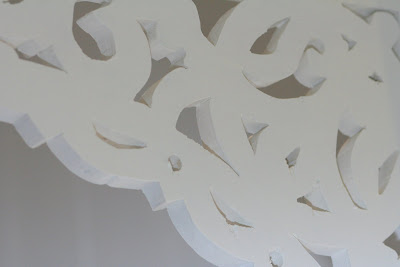Trinidad's vernacular architecture is a reflection of its patchwork history. The only true indigenous architecture is probably the Ajoupa which was well established by the Amerindians by the time Columbus did his discovery dance on the shores of southern Trinidad. The Ajoupa was made of forest wood and covered in palm or carat leaves. But the most beloved of all the local architectural styles would still have to be The Gingerbread House design with its extensive fretwork and high ceilings.
The world of the fretwork and jalousied house provides the shadows and interesting crannies that make for the magical feel of these old homes.

According to John Newel Lewis's Ajoupa. Architecture of the Caribbean. Trinidad's Heritage Republic of Trinidad and Tobago:
 Nowaways some designers expect the glass louvre to do all this at once. It can't." p221
Nowaways some designers expect the glass louvre to do all this at once. It can't." p221

3 comments:
Beautiful ... very nice
C'est le hasard qui m'a conduit sur ce blog. Il est vraiment intéressant de découvrir une culture et des plantes tellement différentes de mon pays (Belgium)
I wish those things were still being built. Nowadays we're slouching towards Miami/Orlando generic.
Post a Comment